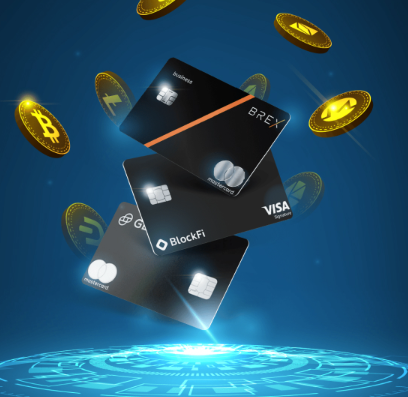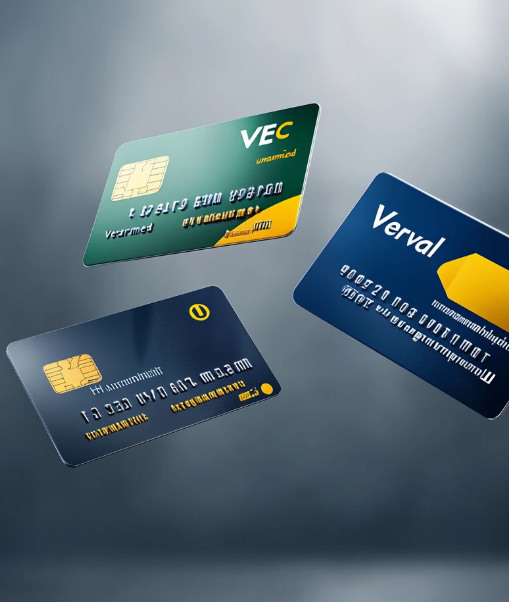The rise of cryptocurrencies has led to a shift in the financial landscape, merging traditional payment systems with blockchain technology. One of the most significant innovations is the introduction of crypto cards, which allow users to seamlessly spend their digital assets while earning rewards. In this blog, we will dive into what crypto cards are, how they work, the various types of rewards they offer, and why they are gaining traction in the crypto community.
What Are Crypto Cards?
Crypto cards are similar to traditional debit or credit cards, but they are connected to a user’s cryptocurrency holdings. These cards allow users to spend their digital assets for goods and services, either directly or by converting their crypto to fiat currency at the point of sale.
There are two main types of crypto cards:
- Crypto Debit Cards: These cards are preloaded with either cryptocurrency or fiat currency, and users can spend the balance until it runs out.
- Crypto Credit Cards: These function like traditional credit cards, offering users a credit line that they repay over time. These cards are typically designed with crypto enthusiasts in mind and offer features tailored to their needs.
How Do Crypto Cards Operate?
Crypto cards make it easy for users to engage in the digital economy by allowing them to spend their cryptocurrencies just like fiat currency. Here’s how they generally work:
- Connecting Wallets: Users link their cryptocurrency wallets or accounts to the card provider’s platform.
- Funding the Card: Users can either add cryptocurrency directly to the card or convert it to fiat before making purchases.
- Transaction Conversion: When a purchase is made, the crypto is automatically converted to fiat money based on the current exchange rate.
- Payment Settlement: Merchants receive fiat currency for transactions, ensuring compatibility with existing payment systems.
Many crypto card providers also offer mobile apps to manage transactions, track rewards, and convert cryptocurrencies, adding convenience for users.
Types of Crypto Rewards
One of the biggest draws of crypto cards is the range of rewards they offer. These rewards can vary, but common types include:
- Crypto Cashback: Many cards offer a percentage of the amount spent as cashback in the form of cryptocurrency. For example, users might earn 1-3% in Bitcoin or other altcoins for each purchase.
- Loyalty Points: Like traditional credit cards, some crypto cards offer loyalty points that can be redeemed for travel, shopping, or even more cryptocurrency.
- Staking Rewards: Certain crypto cards allow users to stake their digital assets to unlock higher cashback rates and additional perks.
- Fee Waivers and Discounts: Premium cards may offer features such as zero fees on transactions or reduced fees compared to standard crypto exchanges.
- NFT and Token Rewards: Some card providers offer digital collectibles or utility tokens as rewards for spending.
Advantages of Using Crypto Cards
Crypto cards offer numerous benefits that make them attractive to users, particularly those familiar with the digital asset world:
- Global Usability: These cards are generally accepted wherever major card networks like Visa and Mastercard are supported, making it easy to use crypto assets for everyday purchases worldwide.
- Effortless Conversion: Users can spend their crypto without manually converting it to fiat currency. The conversion happens automatically during the transaction.
- Enhanced Rewards: Compared to traditional credit cards, crypto cards often provide better rewards, especially for crypto enthusiasts.
- Access to DeFi and Web3: Some crypto cards integrate with decentralized finance (DeFi) platforms and Web3 tools, providing additional ways to manage and grow assets.
- Support for Multiple Cryptocurrencies: Many crypto cards allow users to spend a variety of cryptocurrencies, not just Bitcoin.
Challenges and Risks of Crypto Cards
While crypto cards have many advantages, they are not without their challenges:
- Volatility: The value of cryptocurrencies can fluctuate dramatically, which can affect the value of rewards or the cost of transactions.
- Fees: Some crypto cards charge higher fees for transactions, conversions, or maintenance compared to traditional cards.
- Regulatory Uncertainty: Cryptocurrency regulations vary from country to country, which can impact the usability of crypto cards in certain regions.
- Merchant Awareness: Despite crypto cards’ compatibility with traditional networks, some merchants may still be unfamiliar with or reluctant to accept them.
Choosing the Right Crypto Card
When selecting a crypto card, institutions and users should consider several factors to ensure they choose the right one:
- Rewards Structure: Look at the type of rewards offered, such as cashback, staking perks, or loyalty points.
- Fees: Be sure to understand transaction fees, monthly charges, and any other costs associated with the card.
- Supported Cryptocurrencies: Choose a card that supports the digital assets you regularly use.
- Geographic Availability: Make sure the card is supported in your region or country.
- Security Features: Strong security measures, such as two-factor authentication and insurance coverage, should be prioritized.
The Future of Crypto Cards in the Digital Economy
As cryptocurrency adoption continues to grow, crypto cards are set to become more integral in the future of digital payments. The fusion of blockchain technology with traditional financial systems is opening up new possibilities for consumers to use their crypto holdings in daily transactions.
Looking ahead, we expect to see several exciting developments in the crypto card space:
- Dynamic Rewards: Reward systems tailored to users’ preferences and spending habits will offer more personalized benefits.
- Cross-Chain Interoperability: Cards that support multiple blockchain networks will provide more flexibility for users to spend different cryptocurrencies.
- DeFi and NFT Integration: As decentralized finance and NFTs continue to expand, crypto cards will likely integrate more features for accessing these platforms.
- Stronger Security Measures: Enhanced encryption and fraud protection will ensure that user funds are safeguarded in the rapidly evolving crypto landscape.
Conclusion
Crypto cards are shaping the future of digital payments by combining the convenience of traditional payment methods with the innovation of blockchain technology. These cards allow users to engage in the digital economy while earning rewards in various forms. As the crypto landscape evolves, crypto cards will play a pivotal role in offering seamless transactions, enhanced rewards, and greater flexibility for users worldwide.
With the right rewards structure, security, and support for multiple cryptocurrencies, crypto cards are becoming an essential tool for individuals and institutions looking to navigate the digital financial landscape.













